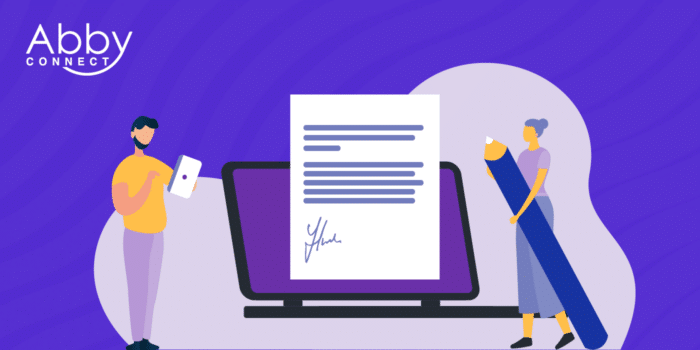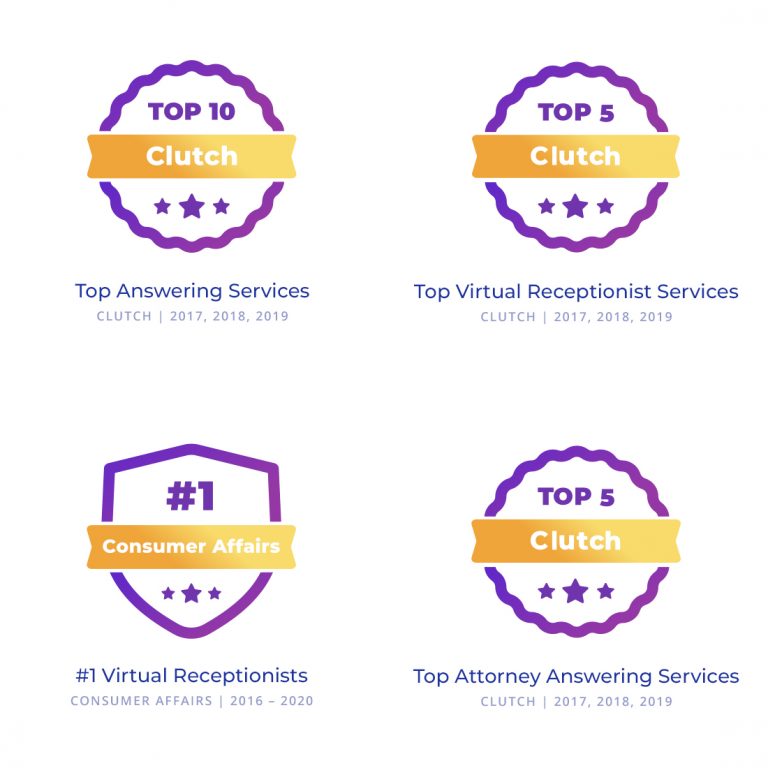So, you had the phone call… now what?
It’s time to employ the art of the call follow-up. If you didn’t already agree to a second call, an email follow-up after a phone call can be a powerful way to keep yourself top of mind, summarize what was said, and build a relationship with the caller on the other end of the phone.
In fact, no matter where you work or the conversation you have, a follow-up email after a phone call is a powerful relationship-building tool.
In this article, we’ll walk you through why the call follow-up is important, providing example follow-up emails, and set you up for success!
Why the Call Follow-up is Important
Everyone who works in a professional setting is familiar with how fast things move. You’re taking calls, getting emails, Slack or Teams messages, and maybe even text messages. You’re busy. So, when you put the phone down and end a call with a coworker, partner, vendor, or client, there’s a good chance both parties are hopping right into another meeting.
It is all too easy to lose the momentum of that call; to drop the conversation because so many other conversations are happening.
That’s where your follow-up email comes in.
Your follow-up email after a phone call is your opportunity to:
- Summarize what was discussed so nothing is forgotten
- Bring your conversation back to top of mind (or top of the inbox)
- Thank the other party for taking the time to talk with you
- Open an opportunity for further conversation
- Show your caller that you care about and prioritize the conversation
When to Send the Follow-up Email
You want to follow up after a phone call within 24 hours. Sooner, if possible.
The goal is to reach them while your conversation is still top of mind so you can seamlessly continue the conversation. If you’re planning to send multiple follow-up emails, spread them out a little. Consider sending the first email the same day as the call, a second email within three days, and the last email a full 7 days later. The actual cadence you use will depend on the type of call you’re following up. A sale or a customer service call may require more follow-ups to keep the conversation going or ensure a problem was solved. A routine check-in or one-time conversation may only require a single follow-up, to build the relationship and thank your caller.
Context matters. Think about your routine touchpoints, the conversation topic, and the tone. Happy callers may only need a single follow-up while upset callers should get more handholding to recover the relationship.
The Anatomy of a Follow-up Email
Your follow-up email is made up of 5 key parts. They are:
- The subject line
- The intro
- The meat of the email (this is the good stuff)
- The ‘next steps’
- Your sign off
Because you’re following up on a phone call, and not sending a general message, it’s important that the contents of your email are specific, reference what was discussed, and provide a further avenue for communication. Your email should address the reason for the follow-up, be friendly but professional, and concise. Remember, this may be a professional email, but it’s also a relationship-building opportunity.
1. The subject line
Make your subject line simple, easy to read, and relevant to the conversation. Your subject line is going to appear alongside dozens of other emails. It should be extremely clear what you’re talking about. Some examples include:
- {Call Name} – follow-up
- Thank you for your time
- {Your Company} – follow-up
- {Call Name} – next steps
- {Me}/{You} – call follow-up
2. The Intro
The intro to your email is more than “Hi, {name}.” It’s your chance to make an impression and thank them for taking the time to speak to you – whether it was a sales, vendor, partner, or even coworker call! The intro is your first 1-3 lines of the email where you specify the topic of the call and thank them for talking with you.
Try one of these example email intros:
- A call with a client or potential client about an opportunity – “Thank you for taking the time to speak with me today about {product/problem/partnership}. I found it very productive, and I wanted to follow-up on {next steps}.”
- A call about an issue – “I appreciate you calling, and I am so sorry about your issues with {product/service/solution}. I’m hopeful that the solution we put in place continues to work but I wanted to provide some additional resources should the problem continue.”
- A general business call – “I just wanted to make sure that I followed up with you after our call {today/yesterday} about {topic}. Please let me know if you have any additional {questions/thoughts/ideas}.”
- A casual call – “It was so great catching up with you today! Here’s a quick summary about what we talked about for your records:”
When you follow up a call with an email, you can pull context from the entire call to personalize the conversation. Don’t be shy to mention an off-hand comment or their dog you could hear in the background. While the email is professional by nature, you’re still building a personal connection.
3. The meat of the email
This is where you summarize a couple of things: (1) what was discussed, (2) how a problem was solved, if necessary, and (3) what the purpose of the call was and whether or not it was achieved. This is your opportunity to add any additional resources (“if you want to learn more about X, check out our ebook!”) or ask follow-up questions.
Consider some of these examples:
- A call with a client or potential client about an opportunity – “On our call today we walked through {product/service/solution} and touched on some potential benefits for your business. I thought it might be helpful to send over some additional resources: {asset A}, {asset B}, and {asset C}. Please let me know if you have any questions!”
- A call about an issue – “On our call today, we implemented {solution} in your account, which should fix the issue. {Add additional details}”
- A general business call – “We walked through {point A}, {Point B}, and {Point C}. I’ve attached the slide deck for our meeting for future reference.”
- A casual call – {summary of discussion}
4. The Next Steps
Finally, it’s time to set the stage for future communications. Just because this is a follow-up email to a phone call, doesn’t mean you can’t set the stage for future calls. List any action items you have or set a date for your next meeting!
- A call with a client or potential client about an opportunity – “I’ll follow-up again next week but please feel free to send any questions my way in the meantime. I look forward to hearing from you.”
- A call about an issue – “I’ll give you a call on {day} to make sure everything is still working. If you run into any additional problems, you can reach me directly at {contact info}.”
- A general business call – “I expect to have all my action items completed before our next meeting on {date}. I’ll follow-up with you by {date} to see how it’s going.”
- A casual call – “Thanks again for taking the time to chat. Feel free to reach out at any time if you have any {thoughts/ideas/questions}.”
5. The Sign Off
Generally, your sign-off can be generic. A simple “thank you, {your name}” works every time! But your email footer is important real estate you shouldn’t forget about. Make sure your email footer includes your full name, email, phone number, a link to your company’s website, and potentially a logo. If you want to get fancy about it, you can include a badge advertising your company’s reviews, awards, or other acclaims.
Your sign-off should give them everything they need to know about you and the company and how to reach you.
Example Follow-up Emails
Here’s a couple of templates for your follow-up email after phone calls.
Example Follow-up Email for a Potential Client
Subject: {My Business} & {Your Business} – Follow-up
Hi {name},
Thank you for taking the time to speak with me today about {product/problem/partnership}. I found it very productive, and I wanted to follow-up on {next steps}.
On our call today we walked through {product/service/solution} and touched on some potential benefits for your business. I thought it might be helpful to send over some additional resources: {asset A}, {asset B}, and {asset C}. Please let me know if you have any questions!
I’ll follow-up again next week on {day}, but please feel free to send any questions my way in the meantime. I look forward to hearing from you.
Best,
{your name}
Example Follow-up Email for a Call About an Issue
Subject: {issue} Follow-up
Hi {name},
I appreciate you calling, and I am so sorry about your issues with {product/service/solution}. I’m hopeful that the solution we put in place continues to work but I wanted to provide some additional resources should the problem continue. {attach or link resources}
On our call today we implemented {solution} in your account, which should fix the issue. {Add additional details}
I’ll give you a call on {day} to make sure everything is still working. If you run into any additional problems, you can reach me directly at {contact info}.
Best,
{your name}
Example Follow-up Email for a General Business Call
Subject: {call name} follow-up
Hi {name},
I just wanted to make sure that I followed up with you after our call {today/yesterday} about {topic}. Please let me know if you have any additional {questions/thoughts/ideas}.
We walked through {point A}, {Point B}, and {Point C}. I’ve attached the slide deck from our meeting for future reference. I expect to have all my action items completed before our next meeting on {date}. I’ll follow-up with you by {date} to see how it’s going.
Best,
{your name}
Example Follow-up Email for a Casual Call
Subject: Thanks for chatting today!
Hi {name},
It was so great catching up with you today! Here’s a quick summary about what we talked about for your records: {summary of discussion}
Thanks again for taking the time to chat. Feel free to reach out at any time if you have any {thoughts/ideas/questions}.
Best,
{your name}
Make Sure You Only Get the Calls You Want with Abby Connect
Of course, you don’t have the time to take every single call your business could potentially get, much less follow up on them. That’s where Abby Connect comes in. With a dedicated team of Abby’s call-handling experts, you can skip the spam calls and only answer the calls you want.
You get a dedicated team of 5-10 virtual receptionists who will answer, screen, transfer, take messages, schedule appointments, provide FAQs, and more – so you only take the calls that make sense for your business. And you get it all at a fraction of the cost of a single full-time receptionist hire.
Learn more about how Abby Connect is different than your traditional virtual receptionist service >>

